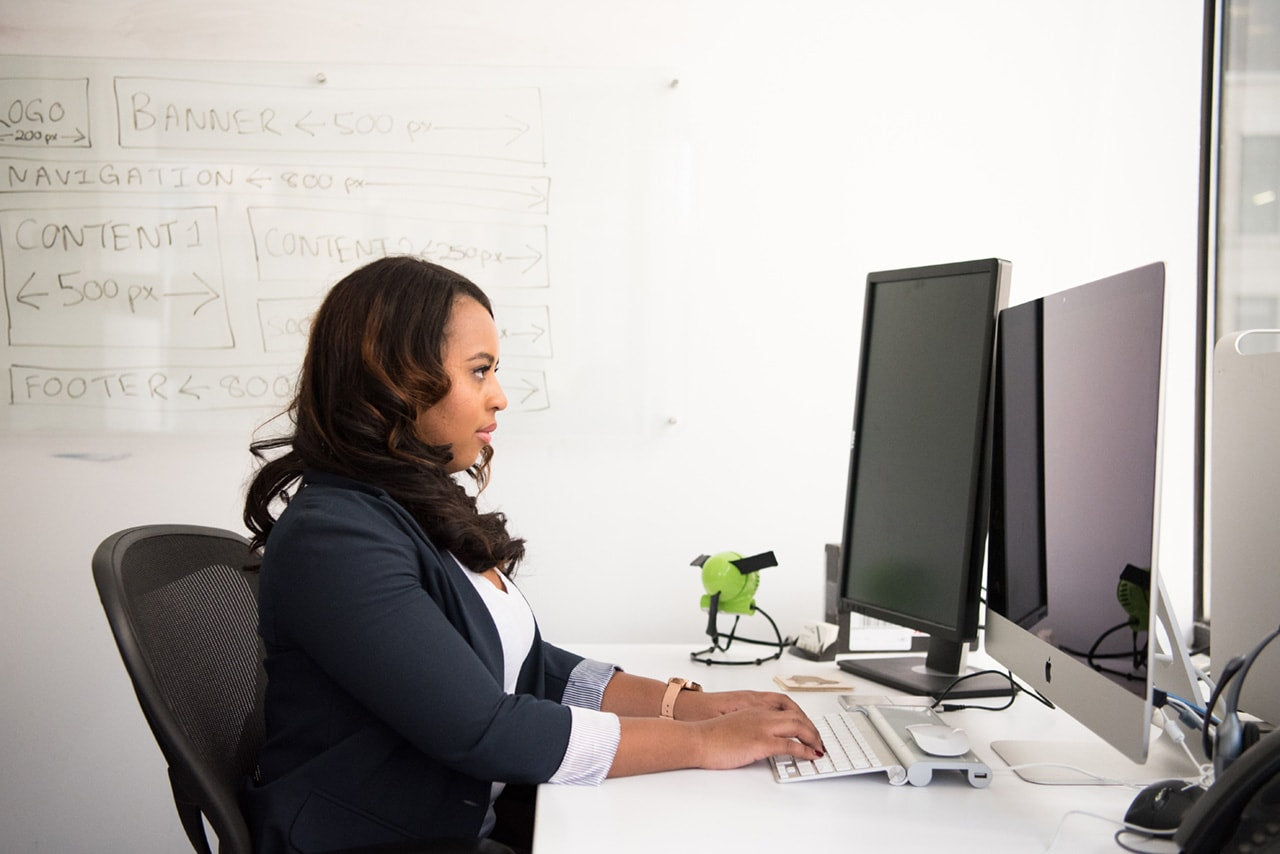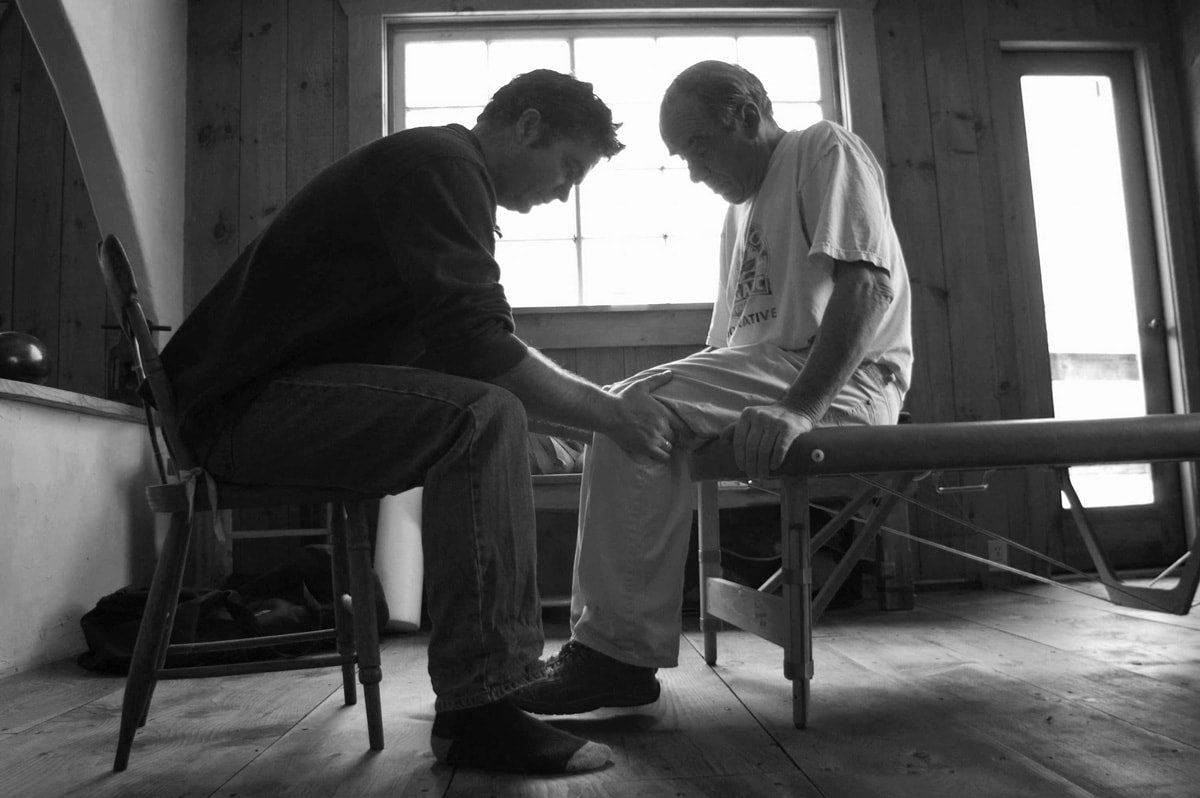The field of ergonomics hasn’t changed their approach and recommendations for chairs in many, many years, even while the rate of Americans with back pain stubbornly persists at 80%. With that sort of track record, we find it puzzling that ergonomics teams still continue to insist that chairs must have backs with lumbar support, and seem unwilling to think differently about how people should sit. So, while innovation eludes the field of ergonomics, we are pleased that so many individuals have discovered that despite not having a back rest and traditional lumbar support, active sitting is a proven approach to relieving back pain.
We have a friend who was an instant convert to the advantages of active sitting. As commonly happens, she found that active sitting not only helped with her posture but also pretty much eliminated her back pain, making it possible for her to work at a computer comfortably after years of difficulty.
She was so delighted with her discovery of active sitting that she wanted to share her experience with her colleagues at work. But when she sent an email to the ergonomics team, our friend was puzzled by the response she received. The company’s ergonomist patiently explained that no one could sit all day on a backless chair; the temptation to slump would be irresistible.
It seems odd that this ergonomist could be so certain of how active sitting would work out without actually trying out an active chair himself. How could he know? Our chair is specifically designed to make slouching almost impossible, so this response from the company’s ergonomics team seems odd, even anti-scientific.
I’m a lifelong academic researcher, and so I can say that we have, in some sense, “done the experiment”. With over 4,000 people sitting on their Ariel chairs, we have a pretty big sample size. And, since under 5% of people return our chairs, we’re confident that active sitting is working well for about 95% of people. We also have a slew of emails and videos from people who are so delighted and enthusiastic that they spontaneously reported their results with active sitting. So active sitting seems not only to work, but to work wonders for some people.
And it’s not just people who sit on our chairs that love them. We’ve also had enthusiastic responses from groups who study human posture and movement “from the inside”. Feldenkrais teachers, Alexander Technique teachers, chiropractors, physical therapists, Pilates instructors, folks in the martial arts world- movement mentors of every stripe have avidly written and blogged about the advantages of active sitting.
I do sympathize with our friend’s ergonomist, however. How many emails from employees must they get touting the advantages of this or that piece of office furniture? It would surely be an effort to check them all out. And it turns out this is a quite general problem. We’ve introduced active sitting to HR people at a number of companies (Boeing, Cysco, etc.), and while HR folks get it and love the idea of active sitting for their employees, they invariably refer us to their company’s ergonomics teams who are universally certain, without evidence, that “no one can sit on a chair without lumbar support.”
My judgement of corporate ergonomics teams may seem a little harsh. But the ergonomics community has a heavy burden here, because after years of pushing the idea that “a chair must have a back with ‘good lumbar support’” the proportion of Americans with back pain remains stubbornly stuck at 80%. If lumbar support is the answer, why hasn’t it solved this problem?
Maybe it’s time to think outside the box that ergonomics has built.
It may simply be that received wisdom dies hard. Galileo failed to convince authorities that the earth revolved around the sun because they refused to look through his telescope. Seemingly, they were so invested in their understanding of the world that they were frightened of what they might see.
This failure to look has persisted throughout history. Indeed, Max Planck, who won the Nobel prize in physics in 1918, famously observed that “science proceeds one funeral at a time”. A somewhat morbid figure of speech, to be sure, by which I think he meant this: When anyone, no matter how smart, is convinced of an answer, well, it’s unlikely that new research will change their view; we will have to patiently wait for the next generation, one that’s more open to new solutions, to come along and replace their hidebound elders.
It does seem ironic that our friend’s company hired a team of ergonomists to help keep their employees comfortable and healthy, but the result has been to prevent their employees from solutions that work for them. Her company is doing its level best to provide the healthy sitting options for its employees; it’s the ergonomics community that has let us all down.
Our friend is fiesty, however, and continues to pepper the ergonomics team with emails. So, this may not be the end of the story; maybe it’s just the beginning.
Encouragingly, it doesn’t always play out this way. A few months ago Google announced that it was providing a stipend for its employees to upgrade their home offices. Somehow our Ariel chair got onto an internal email where it was rated the best seating option available, and within weeks we’d mailed out hundreds of Ariel chairs to almost every one of Googles’ many offices across the US, based it seems on word of mouth recommendations shared throughout Google.
So, it seems not all American companies are equally rigid in their control of employee seating options. Google allowed their employees to vote for the chair of their choice, and active sitting won in a walk.
This is the sort of conversion story that is wind under our wings here at QOR360. This is what keeps us focused, pushing out active chairs, one by one, day by day, working to change the way the world sits.





Leave a comment
All comments are moderated before being published.
This site is protected by hCaptcha and the hCaptcha Privacy Policy and Terms of Service apply.